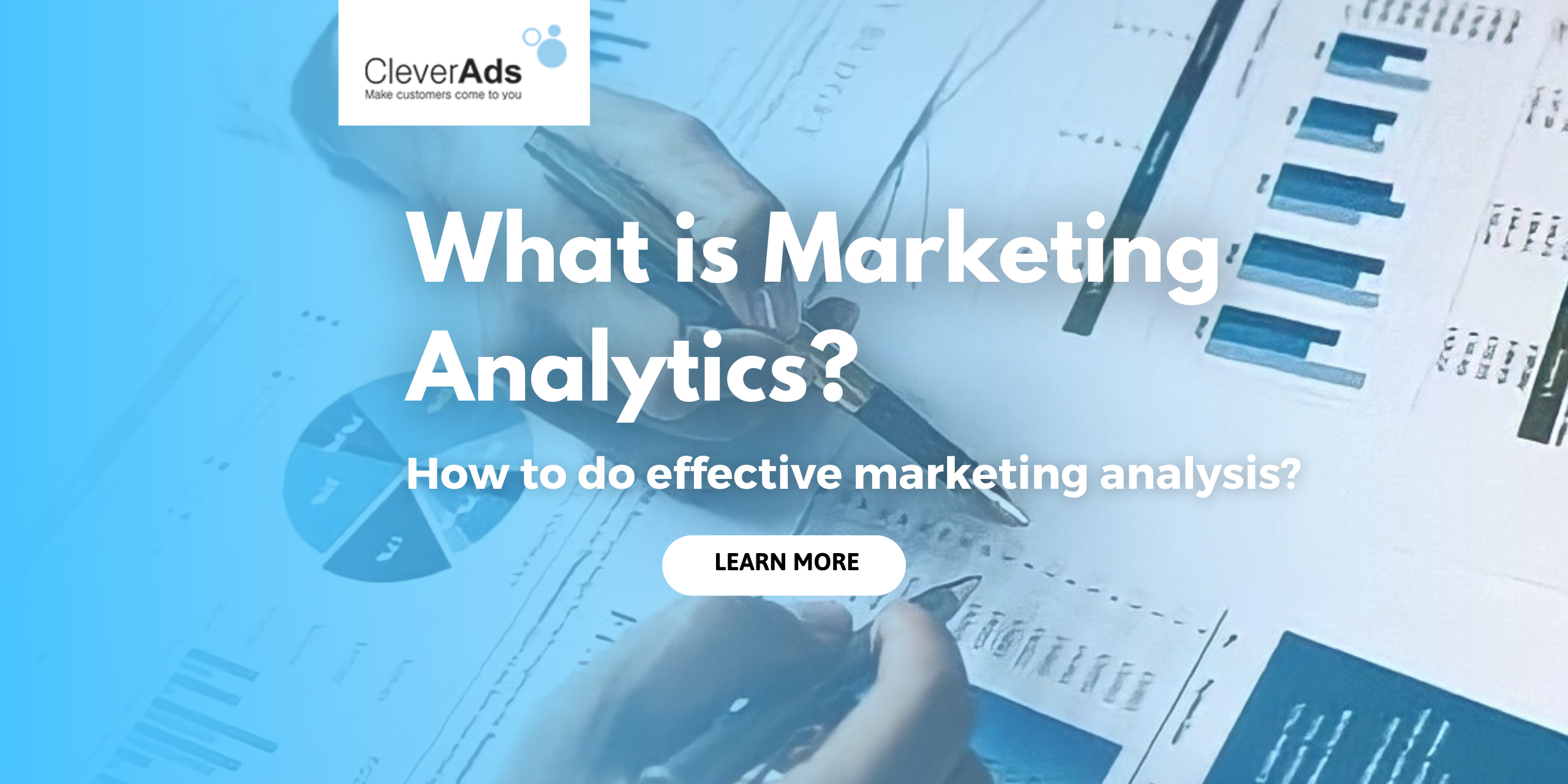What is marketing analytics? How to effectively use it?

Marketing Analytics enables performance measurement, management, and analysis to optimize return on investment. So what is the way to analyze them? Find out together now.
1. What is marketing analytics?
Marketing Analytics (marketing data analysis): is the study of marketing campaigns’ data to evaluate marketing activities’ effectiveness and success. Businesses can gain more insight into consumers, optimize marketing goals, and get a better return on investment by analyzing marketing data.

Marketing data analysis is fundamental.
The primary purposes of Marketing analytics include:
- Evaluate the effectiveness of marketing campaigns.
- Map out new marketing strategies to make the marketing campaign more effective.
The raw data will be processed into complete marketing plans to help maximize the marketing costs of the business.
2. Role of Marketing Analytics
It helps to quantify accurate information.
Specific numbers are always compelling. They make business information more reliable than ever. Statistics are always of interest to many people, which is the basis for them to evaluate the usefulness of the data.
We can use ROI (Return on Investment is the ratio of the net return on total investment) before and after each marketing campaign to check the campaign’s effectiveness because business revenue will increase if the movements are unsuccessful. Marketing translation works well or vice versa.
Marketing analytics helps you access all the data and determine the exact profit earned from your marketing campaigns. Thanks to the facts, every proof makes it easy for marketers to come up with causes and solutions and gain credibility.
Analyze data into adequate information.
Businesses often access user data regularly. It is essential to use that dry data as an effective source of information for companies. Marketing campaigns will be derailed if that data is misleading. Therefore the data needs to be analyzed effectively to be valid.
For example, at the beginning of a PPC campaign (Pay-per-click, also known as pay-per-click advertising), the revenue hovers around $20,000/month. After the campaign, the cost increased to $25,000/month. So is this investment strategy good?
The essential points that Marketing analytics provide include Industry-wide growth, changing trends, customers coming from PCC ads, other ads, etc.
Marketing Analytics Compare and contrast data.

Marketing Analytics allows businesses to compare data sets with each other.
For example:
- How do the company’s PPC earnings compare to estimates?
- Does the revenue generated from a defined number of users make any difference?
How many first sales with lifetime revenue did the PPC campaign generate?
There is an intimate connection between advertising campaigns, content creation, and customers. As a result, problems can be resolved quickly if the business understands the core of the problem.
Every marketing campaign must have clear goals, such as increasing sales and website traffic. Doing an excellent job of analyzing and using data ensures the accuracy of the campaign. In addition, analyzing marketing data helps you measure progress and find gaps to ensure progress.”
Future forecast
When performing marketing analytics, businesses will have to compare and contrast past and present data to identify changes and development directions. Therefore, applying this analysis will help companies to predict future results.”
3. How to analyze marketing effectively.
Direct competitor analysis
They are factors that marketers need to pay attention to and focus on. These are essential components of Marketing Analytics because they help businesses understand all the necessary information about competitors, such as testing activities, where to invest, and network to participate—building a basis for companies to comment and evaluate their position and draw helpful experiences of competitors.
Competitor analysis to create advantages for business market.

Example: The Coca-Cola Company and PepsiCo are beverage competitors. Their products are virtually identical, each with a different name and label. PepsiCo has tried many times to learn the formula of
Coca-Cola but failed. As a result, their advertising campaigns are mutually provocative.”
As a result, their advertising campaigns are mutually provocative.
Analysis of many marketing tools
By taking advantage of and analyzing many marketing tools, businesses will quickly take advantage of all customer information data when analyzing to conduct the development of campaigns and easily crush the competition.
Five effective marketing data analysis tools you can refer to:
- Media Management: Hootsuite
- Lead source tracking: Google Analytics
- Email marketing: Marketo
- Competitor Research: Ahrefs
- Digital Advertising: Facebook Ads
Read more: What are Facebook Ads? From A-Z of Social Media Advertising (cleverads.com.ph)
Follow up on the long-term marketing plan.
Tracking long-term marketing plans helps businesses stay on track with the goals they set out in the original plan. This helps ensure that the results are returned in the most favorable and best way. Besides, it helps them balance their finances to avoid exceeding the business’s budget.
4. What skills do marketing analytics need?
They need to be skilled in the following:
- Conduct quality analysis: Analytics managers must have experience evaluating large data sets to discern insights, including buying patterns and interaction trends within the target audience.
- Make optimization suggestions: Once you have insights into your data, making recommendations to improve underperforming campaigns based on trends is essential.”
For example, data may show that a consumer only interacts with branded content in the evening, announcing a change in strategy to serve ads on the consumer’s commute home from work. Instead of the morning commute.
- Understand consumer trends: Analysts should also closely monitor consumer trends. Understanding consumer needs for omnichannel experiences and how buyers interact will be critical in determining the next steps.
- Using analytics tools: Next, marketers must use automation tools and different analytics platforms because these tools are essential in reducing time spent on analytics—user data collection.
Collaborate with stakeholders: Use working data to propose strategic plans to stakeholders and make it easier to demonstrate the strategy’s effectiveness and earn their trust.
5. Conclusion
Marketing Analytics (marketing data analysis) is a process. Marketing Analytics will help businesses gain more detailed information about consumers, optimize costs, bring sustainable revenue, and surpass competitors. Therefore, analyzing marketing data needs to be focused on and invested in by businesses.


